You can develop super-powerful, superhuman legs with calisthenics leg workout!
I’m here to prove it.👊
The stereotype goes that calisthenics and bodyweight can only take you so far in leg development. In fact, the only cool exercise there is for legs is the pistol squat which many people still claim inferior compared to weighted squats.
That’s WRONG.😢
Calisthenics and bodyweight training can, in fact, train your legs to super-stardom if you implement the PROPER training protocols.
In this article, you will learn these topics:👇
- 🔥 Debunking calisthenics leg myth
- 🔥 Advantages of calisthenics leg workout
- 🔥 Different goals for your leg training
- 🔥 How to make a leg workout with calisthenics
- 🔥 Samples of the best leg exercises
- 🔥 Sample of calisthenics leg workouts
🤔Can you really build leg muscle with calisthenics only?
There are tons of myths surrounding calisthenics, especially regarding calisthenics leg workouts. Too many people think that legs don’t matter in calisthenics because the most advanced skills are typically handed balancing ones, or arm- and core-strength skills. Think of the handstand, the human flag, the planche, etc.
But that’s not all calisthenics and bodyweight training are about.
This stereotype stems from what people usually see on social media. Most of the time, people only find the high-level, SPECIALIZED calisthenics athletes performing gravity-defying skills.
The keyword here is SPECIALIZED. These individuals purposely limit their leg size because it can slow down their ability to master and hold the upper body skills.
If you want to train your legs and don’t want to specialize in these skills, then you can definitely get much more from your calisthenics leg workout!
✨Fundamental principles of calisthenics
The etymology behind “calisthenics” comes from Greek, “kalli” (beautiful) and “sthenos” (strength). Ideologically, calisthenics wants to help you develop your strength, body and mind holistically, in as complete a manner as possible.
Calisthenics might have focused exercises, but it’ll never mean that you should focus exclusively on one part of your body and completely ignore another.
💪 If you have a strong upper body and weak legs, your body isn’t holistically trained.
Calisthenics is composed of a series of pushing and pulling exercises. Some are vertical, some are horizontal. Some make use of the core, some make use of the lower back, and some focus exclusively on a certain muscle grouping.
But the end goal of calisthenics will always be that you be able to use different muscle groups in coordination with each other. This will allow you to achieve impressive feats of strength, balance, and flexibility that most people think are impossible for the average Joe.
So no one should be asking me, why is it so important to train my legs.
Why is it so important to train my legs?🦵
But if I haven’t convinced you about the benefits of holistically training your body, here’s a more in-depth explanation as to why it’s so important to train your legs.
💥DEVELOP RANGE-OF-MOTION (ROM)
For those who don’t know what range-of-motion or ROM is, The Free Dictionary defines it as, “the range through which a joint can be moved, usually its range of flexion and extension, as determined by the type of joint, its articular surfaces, and that allowed by regional muscles, tendons, ligaments, joints, and physiologic control of movement across the joint.”
Basically, how far and wide you can move your body.
So how good is your ROM? Let’s test it out.
Take a look at the deep squat.
I challenge you to try doing 20 squats, following this step-by-step tutorial.
Harder than it seems, right?
That’s because you need to develop your range of motion. It’s necessary if you want to accomplish some of the more challenging moves.
Most traditional weight-lifting will have you doing half-reps that will pump up the muscle but reduce the overall ROM of your hamstrings.
To successfully do 20-40 reps for 3 sets, your hamstrings need to be flexible enough to go down as low as the proper form requires….heels to ass.
💥BETTER PHYSIQUE
If your goal is to build a complete physique with 6-pack abs, then you’d better hit your lower body training as well.
Instead of having a complete rest day after your upper body session, opt for training your legs. This will increase your total calories burnt for the day which can result to better fat loss. The higher your caloric expenditure is, the better your chances of achieving your dream physique. Just don’t forget about your nutrition!
Read more: Bodybuilding Nutritional Guide
💥NO ACHES & PAINS
Tight and weak legs can lead to lower back pains, knee pains, and ankle aches. These pain are common weaknesses that needed to be addressed. A solid calisthenics leg workout is perfect for fixing these concerns. Calisthenics can treat injuries and pains not only for the lower body but for the whole body as well.
Read more: How to Treat Injuries with Calisthenics
💥BETTER MOBILITY
Regularly training with a proper calisthenics leg workout will not only strengthen your legs but also improve your mobility. This translates to better movement and eliminating weaknesses. Once you covered these down, you can move freely that’s perfect for everyday movements.
💥DEVELOP BALANCE
Let’s revisit the oh-so-popular and famous pistol squat.
If you want to successfully achieve a pistol squat with proper form, your ankle needs to be strong, your balance completely centered on the standing leg. That balance needs to be maintained throughout the entire descent and ascent of the body. If you aren’t balanced, you won’t successfully go down or get out of the pistol squat.
You’ll just fall.
So, strong as you might be, you need that balance to do seemingly simple-looking exercises.
This goes not only for training for pistol squats but just general lower body training. Developing stronger legs and core WILL DEVELOP better balance even as the years go by.
💥PREP YOUR BODY FOR CALISTHENICS POWER MOVES
The strength you’ll develop in your legs will allow you to progress with more advanced calisthenics power moves.
Take aerials, for example. Flips, jumps, flags, planches, explosive moves in general…they all require leg strength, if you haven’t realized it yet.
If you have perfect mastery of your squat, you’ll master much more easily some of the aerial moves, namely front or back flips.
…who wants chicken legs with a powerful upper body anyway?
DIFFERENT LEG WORKOUTS FOR DIFFERENT GOALS💯
I’m going to share in this article a list of exercises, but your outcome goals will make a difference in how you do the exercises, in addition to which ones you’ll want to do.
Similar when lifting weights or performing other exercises, each movement can be done so cater to a specific goal. Just because you want to do push-ups, doesn’t automatically mean you will build strength towards planche (but it can help!).
Specific Adaptations to Impose Demands (SAID) Principle envelops our goals. We need to be specific with our training to meet our specific goals.
Here are some specific goals you might want to work on in your leg training:
- ✊ Power and explosiveness
- ✊ Strength
- ✊ Muscle size
- ✊ Mobility
- ✊ Endurance
- ✊ Specific skills
⚡️Calisthenics for explosive leg power
Do you want to master explosive moves?
Parkour pros, trick, and acrobatic athletes, or sport specifics athletes 🏃 (for example, jumping for basketball) want this kind of power.
Your focus should be almost exclusively on skill-work and train the explosive moves you’re working towards, such as box jumps, jump-lunges, jump-squats, etc.
Slow and eccentric (negative phase) movements might not be the best type of training for you. This will lead to larger legs, which isn’t always beneficial depending on context. What you want are powerful movements.
Weighted squats also provide an advantage of added general absolute strength gains. This lets your legs generate maximum force.
Explosive legs workout
Strength can be displayed in a variety of ways. You can perform a movement with control, in a large range of motion, or you can show it with explosiveness.
Training for explosiveness develops a power that’s exerted to generate momentum. For this workout, you can increase your ability to jump, sprint, run, hop, or any other movement patterns that require a fast burst of power.
Squat explode – 3 sets of 10 reps
2 minutes rest
Plyo squat complex – 3 sets of 10 reps
90 secs rest
Jumping lunges – 3 sets of 12 reps
90 secs rest
Single-leg explosive leg pogo – 3 sets of 15 reps
60 seccs
⭐️Calisthenics for stronger legs
Do you want to build stronger legs?
To be quite honest, if this is your main goal, and you want a more straightforward manner, weight-lifting might just be the best training method for you. However, if you have just started your fitness journey, then calisthenics can be a fantastic option.
Absolute strength refers to the maximum force output your muscles can generate regardless of any factors such as weight. For example, if you can lift 50 kg, then that’s your absolute strength
Relative strength refers to the force generated relative to your body weight. Let’s look at the example below:
Athlete A
Weight – 50 kg
Weight can lift – 100 kg
Athlete B
Weight – 80 kg
Weight can lift – 150 kg
At first glance, you’ll immediately notice that athlete B is much stronger in terms of absolute strength.
However, since athlete A can lift twice his bodyweight while athlete b can only lift 1.8 his bodyweight, athlete A’s relative strength is better.
If your goal is to get strong, regardless of your weight, then go lift weights. This is a better option for sport-specific strength requirements.
If your goal is to get strong in terms of controlling your body, then you can choose either way.
⭐️Calisthenics legs workout for strength
When training for strength, we have to be honest, calisthenics can get limited. HOWEVER, the ceiling of strength is relatively high. Not unless you have a specific weight you want to squat or amount of strength you want to generate, then calisthenics is great for developing general strength.
The reason why calisthenics can be limiting is that we are limited by our body weight, plus our legs are naturally powerful to support our bodies. But that cap is still far for many individuals. Once you’ve reached it, consider using weights.
Here’s a strengthening workout for your legs.
Pistol squats – 3 sets of 4 to 8 reps per leg
3 min rest per set
Elevated glute-ham bridge – 3 sets of 10 reps
90-sec rest per set
Bulgarian squats – 3 sets of 10 reps per leg
2 minutes rest per set
Quad extensions – 3 sets of 4 to 10 reps
90-sec rest per set
Elevated single-leg calf raises – 3 sets of 10 to 15 reps per leg
90-sec rest per set
Walking calf raises – 3 sets of 10 – 15 reps per leg
90-sec rest per set
⭐️Holistic Leg Development
I’ll give it to your straight: leg training (even for the whole body) isn’t always just about strength and muscles.
There are other factors you would want to achieve while working on your legs such as:
- Endurance
- Balance
- Control
- Mobility
While you can also develop these attributes through weight training, you can easily neglect this because of the primary nature of the approach.
Training with a calisthenics leg workout naturally develops your legs in a holistic fashion. It’s something you might want to consider when choosing an approach.
Read here:📍 Is Calisthenics Better for Muscle Growth?
Holistic leg workout
Most calisthenics leg workouts can develop your legs in a holistic fashion. However, you can also cater your leg training to target all necessities of complete leg health.
In this workout, you can improve your strength, mobility, muscle size, balance, and control. Varying the training protocols can improve specific goals even if you’re using more or less similar exercises.
Here’s a workout example:

Holistic Leg Workout
Step-up – 3 -5 sets of 6 – 10 reps per leg
2-min rest
Nordic curls – 3 – 4 sets of 8 – 12 reps
90-sec rest per set
Side to Side Squat – 3 – 4 sets of 4 to 6 reps per side
2 min rest
Quad extension – 3 – 4 sets of 8 – 12 reps
90-sec rest per set
Squat explode – 3 sets of 5 – 10 reps
2 min rest
Arch ups – 3 sets of 6 – 12 reps
90-sec rest per set
Two leg calf raises – 3 sets of 15 – 25 reps
60-sec rest per set
Bent leg calf raises – 3 sets of 15 – 25 reps
60-sec rest per set
🧐How to train your legs to build mass and endurance
If you ever want to build mass, there are some fundamental rules you need to follow.
Rules to build mass and endurance.
For muscle mass using calisthenics, you’ll naturally get to train your muscular endurance as well. This is because of the high-volume training you need to induce muscle hypertrophy. We might be limited with our body weight with calisthenics, but there are also other driving forces to improve muscle growth.
1. ☝️Do multiple sets and high rep ranges
If you want to develop muscle, then you need to focus on doing high volume in your workout. One or two sets won’t be enough for this goal. Instead, try doing upwards of 4 sets, with no more than 120 seconds of rest in between sets.
For rep ranges, don’t limit yourself to the common knowledge of 8-12 reps. You can go 25 to 50 if you have to.
In a 2019 research, trained athletes developed muscle even with relatively lower loading (for example, using bodyweight), but aimed for high-volume training.
It’s possible to build leg muscle mass with just your body weight, but calisthenics leg workouts can get longer since you have to push your training volume to the limit. The caveat is that strength gains will not be as apparent at higher training volume.
Aim to go close or to actual failure per set. This means until you are no longer able to perform a single rep of the exercise.
2. ☝️Isolate muscle groups
Focus on the different muscle groups: working one single muscle isn’t enough. If you train muscle groups instead, faster development will occur.
What does this mean? Don’t just perform your regular bodyweight squats especially if you’re no longer a beginner.
Choose exercises that can isolate leg muscle groups. Here are some options:
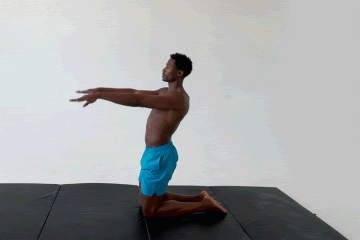
Quadriceps – Bodyweight quad extensions
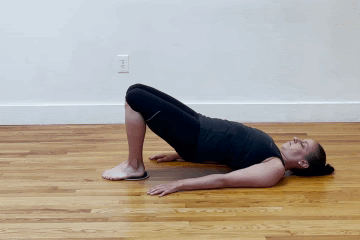
Hamstrings – Hamstring curls
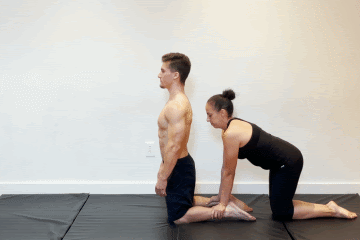
Glutes – Nordic curls

Calves – Calf raises
3. ☝️Get ample rest!
You need to fatigue your body throughout the workout in order to avoid stimulating hypertrophy. HOWEVER, this doesn’t mean you need to train with minimal to no rest in between sets.
Research suggests getting around 2 minutes of rest per set to maximize muscle hypertrophy. However, this will still depend on your current skill level and other training variables such as training volume.
As a guideline, aim to get around 1 to 2-minute rest in between sets. You can go longer if you’re unable to perform the same intensity as your previous set. The trade-off is that your workout is going to be a tad bit longer.
You can read more about rest periods here:📍 How Long Should I Rest in between Sets
4. ☝️Use the full range-of-motion
Make sure that you’re working the full range of motion of your legs. Again, it’ll help you work through multiple muscle groupings, which is the most optimal way to train.
A study conducted on the effects of a range of motion on muscle-building supports this training protocol. Training with a full range of motion also helps improve your mobility so you can control your body better.
Muscle-Building basics
Before we go into the workout proper, let’s just go back to the basics of hypertrophy, or the process of building muscle.
It’s actually simpler than you think. You need to cover three bases to get yourself a bigger and stronger set of legs.
- Progressive training – Make each session more difficult than the other in a GRADUAL manner. Always add reps and sets first before moving up a progression.
- Proper nutrition – Meet your caloric needs with high protein with a major focus on whole foods.
- Ample sleep and recovery – Get around 8 hours of high-quality sleep and manage your stress.
Find your balance with these factors plus get down on a solid calisthenics leg workout CONSISTENTLY and you will make your legs grow!
Is your goal calisthenics mastery?😍
This goal will bring your focus on pure skill-work, and mastery of the different progressions.
With this goal in mind, you should start with the progressions you’re almost mastering, and slowly work your way up.
Skill work, in this current context, pertains to training both mobility, strength, and muscle development for learning the squats.
The list of leg exercises I’m offering here might help, but if you want to attain calisthenics mastery, I highly encourage you to join The Movement Athlete program and community.
Here’s how you can get started on training your legs for calisthenics mastery:
🤔Why is the Pistol Squat a Fundamental movement?
I mentioned this earlier; the pistol squat is the ultimate challenge for leg strength. It requires both the push and lifts aspect of bodily (rotational) strength, in addition to the need for strong ankles and excellent balance.
The pistol squat allows you to scope out any issues you might have in your ankles, legs, and hips: it’ll help you uncover issues with mobility, hamstring flexibility, ankle strength, and overall lower-body range of motion.
It’s a unilateral or one-sided movement that challenges your balance in a way that the standard deep squat just can’t since the two feet are planted firmly on the ground.
Training your pistol squat will only benefit your overall health and lower-body strength. It develops a durable strength while addressing key issues of those important joints.
Your range of motion will be thoroughly challenged, your weaknesses made obviously and a solution provided, all thanks to this one movement that is deceptively difficult.
🤜Where do Beginners start?
“But…I can’t do a Pistol squat yet. So what now?”
If you can’t do it yet, that’s OK. Because if you set your mind to it, you will master it. Everyone starts from somewhere.
Calisthenics is focused on working through progressions. If you can’t do the pistol squat yet, start with an easier progression. If you’re not sure where to start, try out the Movement Athlete assessment to find out!
Where it all begins: Squats🔥
If you can’t do a single-leg exercise, the obvious and natural way to scale it down is to perform with two legs.
Reverting back to regular squats is perfect for beginners because it offers more stability and requires less demand on the mobility and strength aspects. This means you can build up your requirements gradually towards the pistol squats.
Not everyone will be able to begin immediately with regular two-legged squats. We still have progressions for complete beginners to follow.
🏆Master squats to unlock more movements
The squat is a complete leg exercise. It trains your general mobility, strength, endurance, awareness, and technique. Squats build an amazing foundation for many movement patterns.
This is why it’s also a gateway toward more advanced calisthenics leg exercises. Once you have mastered the squat, you will be able to unlock the following more advanced movement patterns:
- ✅ Quad extensions – This is an amazing exercise that isolates the quadriceps. While strengthening and building muscle, it also improves your mobility as you go deeper in the movement pattern.
- ✅ Nordic curls – Build amazing hamstring and glutes through this exercise. This movement is no joke. It’s very scalable to fit beginners even to the high-level calisthenics athlete.
- ✅ Box jumps – For more explosive power, box jumps are the way to go. You can even develop balance and awareness especially when you work your way towards single-leg variations.
- ✅ Pistol squats – Of course, the pistol squats journey opens up once you have mastered the regular squats. It will take some time, but if you stay smart and consistent with your training, you will be doing pistol squats soon!
Calisthenics leg workout for Beginners

Calisthenics Leg Workout for Beginners
Box squats -3 sets of 8 – 12 reps
2 min rest per set
Sit back training – 3 sets of 6 – 10 reps
90-sec rest per set
Assisted squat hold – 3 sets of 30 seconds
90-sec rest per set
Chair squat hold against the wall – 3 sets of 30 seconds
90-sec rest per set
Making the workout easier
If you still can’t reach the full range of motion of the exercise, you can still limit the range of motion based on your current skill level.
Don’t worry. It doesn’t mean that you’re not performing the exercise in good form. It just means that you’ve scaled down the movement while your body’s still getting used to the full range of motion.
DON’T RUSH!👊
Don’t force the process. You need to start at the level that’s best for you. It’ll help you learn proper form, master your body from the ground up and prevent you from risking any injury.
We’ve written extensively on the importance of personalisation and how doing the standardized beginners/intermediate exercises is hurting your progress. The Movement Athlete Academy adjusts your workouts based on your feedback during a particular training session.
💯Calisthenics leg training is more than the pistol squat!
The myth goes that the only leg training calisthenics offers is the pistol squat.
…which in itself is a badass exercise, as you now know. So if you haven’t tried it and are judging, I suggest you go test it out right here and now and then be quiet and keep reading.
Calisthenics includes many other squat variations, and even weight variations for leg training, such as plyometric jumps, quad extensions, nordic curls, skaters squats and much more.
As soon as you start looking beyond what’s in front of you and mixing up different movement patterns, you’ll see the vastness of what’s out there and what we can do with our bodies.
There are bodyweight leg exercises that go beyond a pistol squat to hit your quads, glutes, hamstrings, and calves. Although they’re limited, they’ll turn your legs into tree trunks if that’s what you’re aiming for.
Combining those with explosive squat variations can really do magic.
Still not convinced?
Just look at some of the biggest names in calisthenics: Frank Medrano and Lazar Novovic.
Read here: Why You Should Choose Calisthenics for Leg Training
🏆Advanced Leg Training
Gymnasts are known to train PRIMARILY with calisthenics. Their legs are incredibly muscular nonetheless. While they do include weighted training from time to time, most of their elite athleticism and physique came from bodyweight training
So let’s stop stereotyping calisthenics leg training, m’kay?
Advanced leg training is more extensive than beginner ones. It requires more exercises with more challenging variations to ensure your body’s gets enough stimulation.
Isolation is also implemented to add overloading of specific muscle groups. Reserve this technique for the more advanced and experienced athletes.
👍Advanced calisthenics leg workout
For the advanced workout, you can incorporate supersets into your routine. This means performing two exercises consecutively then resting only after finishing the second exercise.
Supersets are implemented to shorten the training time. It’s also ideal to target two opposing muscles groups or unrelated muscle groups to avoid overfatigue in a given set.

Advance Calisthenics Leg Workout
Set 1
Pistol squats – 3 -5 sets of 8 to 20 reps per leg
2 min rest per set
Set 2
Sissy squats – 3 to 5 sets of 8 to 30 reps
90 sec rest per set
Set 3
Side to side squats – 3 – 4 sets of 6 to 12 reps per leg
90 sec rest per set
Superset 4
Quad extensions – 3 – 5 sets of 8 – 20 reps
Nordic curls – 3 to 5 sets of 8 – 15 reps
90 sec rest per set
Super Set 5
Elevated single-calf raises – 4 – 5 sets of 20 to 40 reps per leg
Explosive calf raises – 4 – 5 sets of 30 to 50 reps
90 sec rest per set
Calisthenics Muscle 💪 Mass-Building Workout
I’ve put together a list of some of the essentials of leg-training in calisthenics. Make sure you first warm-up before attacking the exercises, and always, ALWAYS do the exercise at the level where you are.
DON’T FORCE something you’re not ready to do just yet. The more consistently you train, the better results you’ll have. And the more safely you’ll be training
Here’s a basic workout with the focus being on building mass and endurance:
A LEG WORKOUT TO BUILD MASS
Remember, volume is super important to fully fatigue a muscle group. Try doing this set 4-6 times total. Give yourself ample time for rest and make sure you perform the exercises with good form.
Here’s how a full leg workout might look:
1. ✊ Warm-up
Warm-ups are essential in any workout or activity. This primes your muscles and mind for the following challenge you will undertake. Studies show that warm-up can boost your performance so you can get the most from your workout.
So don’t skip it no matter how boring if may be for you. Don’t worry. It doesn’t have to be extensive. It’s main purpose is to pre-active your muscles to get a better response in your calisthenics leg workout.
Here’s a brief of what you get from your warm-up to increase your performance:
- Muscle pre-activation
- Increase heart rate
- Mobilize the joints
- Mental preparation
Assisted deep squat hold – 2-3 times, 30-second holds
Leg swings – 10 reps each leg
Fire hydrants – 5 reps each leg
Side plank – 30-second hold each side
Knee to wall – 10 reps each leg
2. ✊ Routine
Complete Calisthenics Leg Workout with supersets
*Superset – This means performing the two sets of exercises consecutively without resting before taking a rest period. Supersets allow for faster workout sessions without compromising workout effectiveness.
Each superset targets opposite muscle groups to avoid overdoing a single muscle group.

Complete Calisthenics Leg Workout with Supersets
Superset 1:
Pistol squat variation – 4 – 12 reps per side
Hamstring curls – 6 – 8 reps
Sets: 4 – 5 sets
Rest: 90 – 120 sec rest
Superset 2:
Quad extensions variation: 4 – 12 reps
Nordic curl variation: 4 – 12 reps
Sets: 4 – 5 sets
Rest: 90 – 120 sec rest
Superset 3:
Single-leg calf raises: 8 – 30 reps per leg
Arch-ups: 8 – 12 reps
Sets: 4 – 5 sets
Rest: 60 – 90 sec rest
Repeat the set at least 3 more times
Warm-Ups
Warm-ups are crucial. Don’t skip this part!
ALWAYS take your time and do the exercises, and warm-ups, as slowly as you can. I’d encourage to try executing each movement in no less than 30 seconds.
In-depth guide here: Ultimate Guide to Calisthenics Warm-up
1. Assisted squat hold
👉How to perform:
1. Stand beside a sturdy furniture or surface you can hold on to
2. Slowly bend down to your deepest squat your mobility allows while holding on the furniture
3. Keep your core engaged and body upright
4. Shift your weight to different directions to mobilize your lower body
5. Use your upper body while holding onto your furniture to decrease the weight on your legs
6. For more mobile individuals, you can perform the exercise unassisted
2. Leg swings
👉How to perform:
1. Stand close to a wall and touch the wall for balance
2. Slowly swing one leg to the side and up
3. Focus on activating your glute muscles to perform the movement
4. Actively think of the muscle executing the motion
5. Perform on both sides
3. Fire hydrants
👉How to perform:
1, Go into all fours
2. Posterior pelvic tilt (tilting your hips backward)
3. Maintain a straight back
4. Lift one leg while keeping it bend to sidewards, to the back, and down
5. Reverse the motion
6. Pause at the peak of each phase
7. Slow and controlled movement
4. Side plank
👉How to perform:
1. Lie down on your side
2. Place your elbow underneath your shoulders
3. Lift your hips so that it’s aligned with your upper body and not hinging
4. Engage your core and contract your legs
5. Breathe normally
6. Perform on the other side
7. Lift the floating leg for added challenge
5. Knee to wall
👉How to perform:
1. Stand around two feet away from the wall and hold the wall for balance
2. Step one leg forward
3. Drive your knee towards the wall while focusing on your ankle mobility
4. The further your foot is from the wall and the closer you can get your knee towards the wall, the greater the stretch on your ankle
5. Perform on both sides
6. Bodyweight Leg Training Exercises
I’m sharing with you some starting and some mastery exercises. If you want to know exactly which kinds of exercises YOU should be doing, go try The Movement’s Athlete program for free. This is just a small taste of everything calisthenics has to offer for your leg training.
🎯PISTOL SQUAT (STARTING)
About the movement:
Pistol squats are a good workout for the major muscles of the leg like the quadriceps, hamstrings, and glutes (or the buttocks). The movement also stresses the core muscles, inner thigh muscles, and calf muscles as they help maintain posture and balance throughout the exercise. It’s a great exercise to start conditioning you into proper squat work.
Many think this is too advanced for the majority but it can be scaled down to an easier level. Seated pistol squats are a perfect example. You can also add an explosive component for powerful legs.
👉How to perform:
1. Seat on a stable surface
2. Place your feet shoulder-width apart
3. Lift one leg up and straight to assume the seated pistol squat position
4. Stand straight with eyes, knees, and toes pointing straight ahead
5. Bend your hips and knees to lower your body as if attempting to sit while keeping tension on your legs
6. The lower the surface you are sitting on, the harder the exercise
7. Perform the movement on both sides
8. Move to a harder progression such as assisted pistol squats or negatives once you get stronger
Be careful:
This exercise places a lot of stress on the knees if your skill level isn’t quite there yet. Consider moving to an easier progression such as seated squats with two legs
If you are suffering from osteoarthritis or any other knee problem, do not bend your knees too much and do fewer reps
Do not arch your lower back while going down as it will cause low back pain
🎯HAMSTRING CURLS (STARTING)
About the movement:
Hamstring curls are perfect for developing strength, muscle, and mobility for your hamstrings (duh!), glutes, and lower back. It’s also scalable to suit any skill level and you can do it anywhere. Having a smooth floor will make your life easier.
👉How to perform:
1. Lie down on the floor with your arms by your side and legs bent
2. Place two sliders or pieces of cloth underneath your feet to make the gliding experience better
3. Raise your hips while keeping a posterior pelvic tilt
4. Glide your feet further away from your body as slowly and controlled as possible
5. Emphasize your hamstrings and glutes when performing the movement
6. Slowly get back to the starting position but maintain your lower back raised
7. Repeat for reps
– Beginners can hold the starting position instead of adding the glide
– More advanced athletes can hold the longest position
– Adjust the range of motion based on your strength
Be careful:
This move is prone to an excessive arching of the lower back. Avoid that by tilting your hips backward and engaging your core at all times
🎯QUAD EXTENSIONS (ADVANCED STARTING)
About the movement:
For building quad size and mobility, quad extensions are the perfect exercise for you. This movement seems difficult, but it can easily be scaled to an easier progression.
👉How to perform:
1. Begin in a tall kneeling position
2. Posterior pelvic tilt
3. Slowly lower down by hinging at the knees
4. Focus on your quads to facilitate the movement
5. Slowly return back to the starting position and repeat for reps
6. Engage your core at all times
7. Keep your body upright
Be careful:
– Avoid hinging at the hips. This will offload the work on your quads
– For beginners, use resistance bands on hold on to something when performing the exercise to avoid overdoing it
– A hard floor might limit your progress. Don’t worry about adding padding underneath your knees.
🎯NORDIC CURLS (ADVANCED STARTING)
About the movement
Nordic curls are killer on your glutes and hamstrings. It’s a very challenging exercise that can be scaled for beginners. You can definitely work on this exercise for a long time and still find yourself challenged in increasing towards the full range of motion with perfect form. You can ask your partner to hold you down similar to the video below, but you can always get creative for your anchor.
👉How to perform:
1. Begin in a high kneeling position with your feet anchored and stable and your hips in a posterior pelvic tilt
2. Slowly descend forward by hinging at your knees
3. Keep your body upright and core engaged
4. Aim to move slowly until your face is close to the floor
5. Slowly lift back up using your glutes and hamstrings (Video above shows only the negative portion)
6. Repeat for reps
Be careful:
– You can hinge at the hips during the earlier progressions of the exercise
– Play around with negatives or band assistance to find the challenging progression that allows you to reach good training volume
– Add padding on your knees. A hard floor can be too uncomfortable
– If you are suffering from osteoarthritis or any other knee problem, do fewer reps.
– Do not extend at the low back while coming up
🎯SINGLE-LEG CALF RAISES (STARTING)
About the movement:
Want bigger calves? Single-leg calf raises can get you those! Just take note that calf size is highly genetic. There might be some limitations for others, but you can always maximize your muscle growth by focusing on this exercise with the right intensity and training volume.
👉How to perform:
1. Stand on an elevated surface near a piece of sturdy furniture or wall
2. Lift one leg up and the other just at the edge of the surface so that your heels are just hovering.
3. Let your heel drop towards the ground and feel the strength on your ankle
4. Slowly push up to your tiptoe to activate your calf muscles
5. Pause at the top position
6. Slowly lower down to the starting position and repeat for reps
7. Perform on the other side
🎯ARCH UPS (ADVANCED STARTING)
About the movement:
Arch ups are perfect for developing a strong lower back and also improve your glute and hamstring activation. This exercise is very much underrated in the fitness community but offers amazing benefits for your posterior chain of the upper and lower body. It also improves your overall mobility which is perfect for eliminating aches and pains.
👉How to perform:
1. Lie down on the floor in a prone position
2. Place your arms overhead and feet together
3. Raise your arms and legs simultaneously by engaging your back, glutes, and hamstring muscles
4. Keep your abs tight
5. Move through your mobility
You NEED to train your legs, and this is just the starting point
Calisthenics can definitely help you get the legs of your dreams, but for that to happen, you need to train them.
Holistic training means also focusing your attention on that part of your body.
If you want to successfully achieve the planche or the human flag, you need your legs to be just as strong as your upper body.
Just because you might ignore them doesn’t mean that they’re dead weight.
Legs deserve just as much love and training as the rest of your body.
How do you train your legs? Share your routine in the comments, or in our Facebook Group!


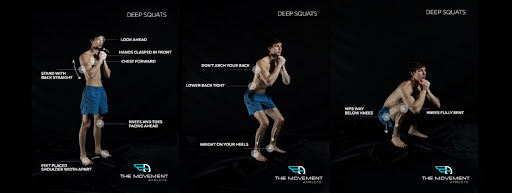

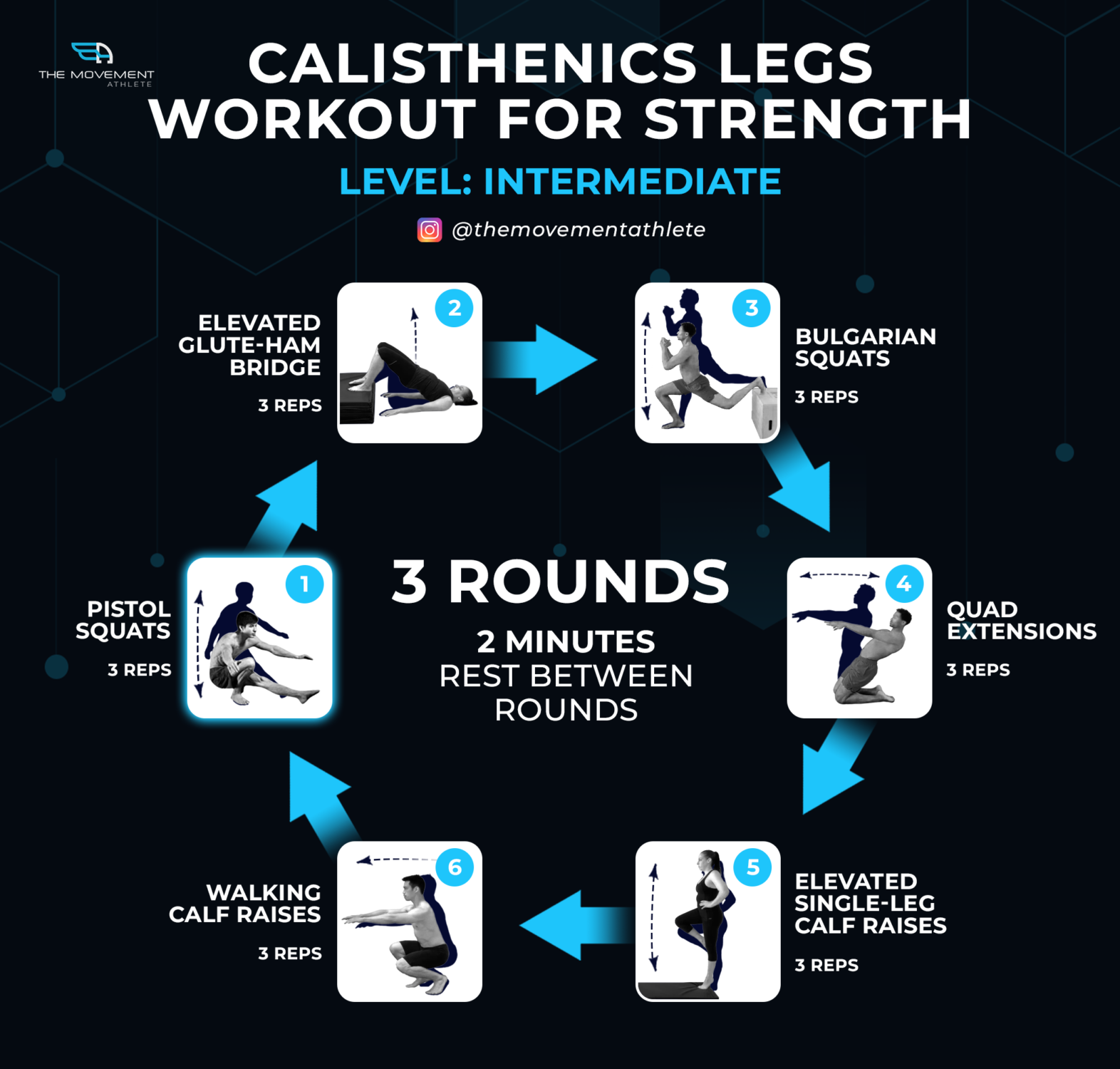
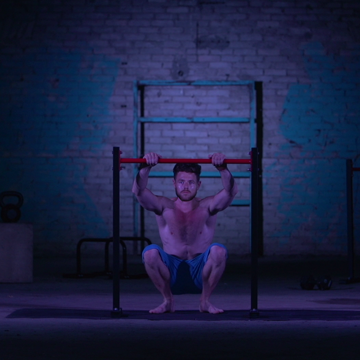
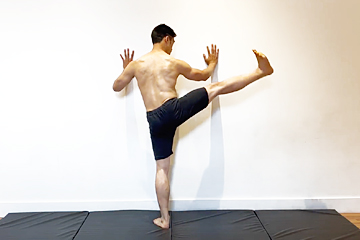
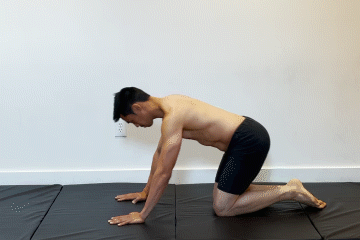

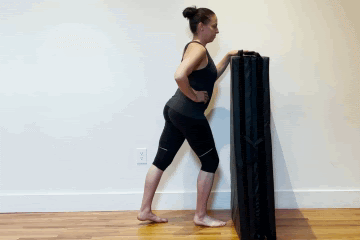
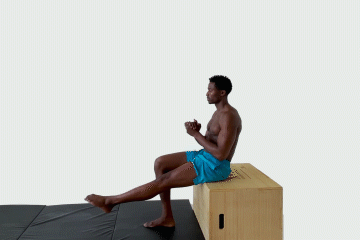
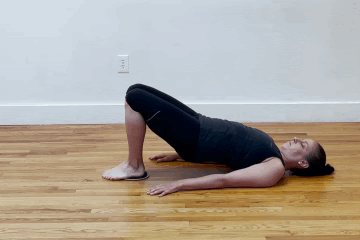
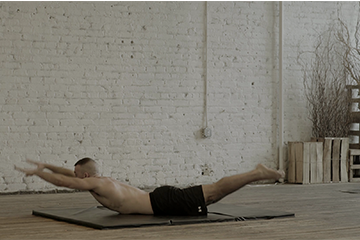

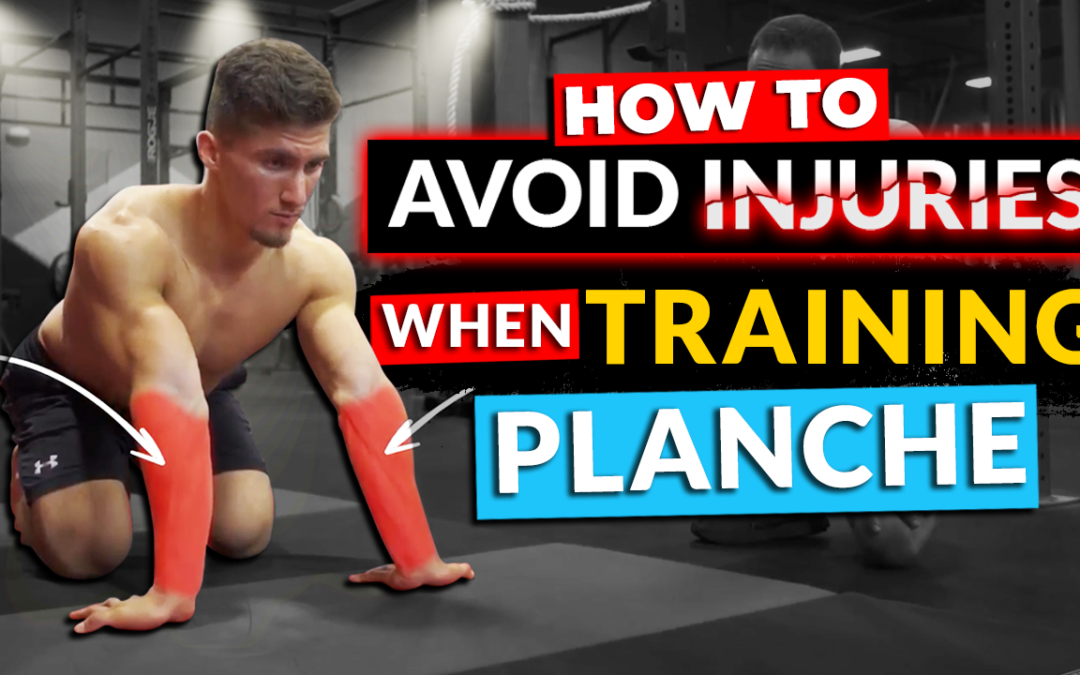
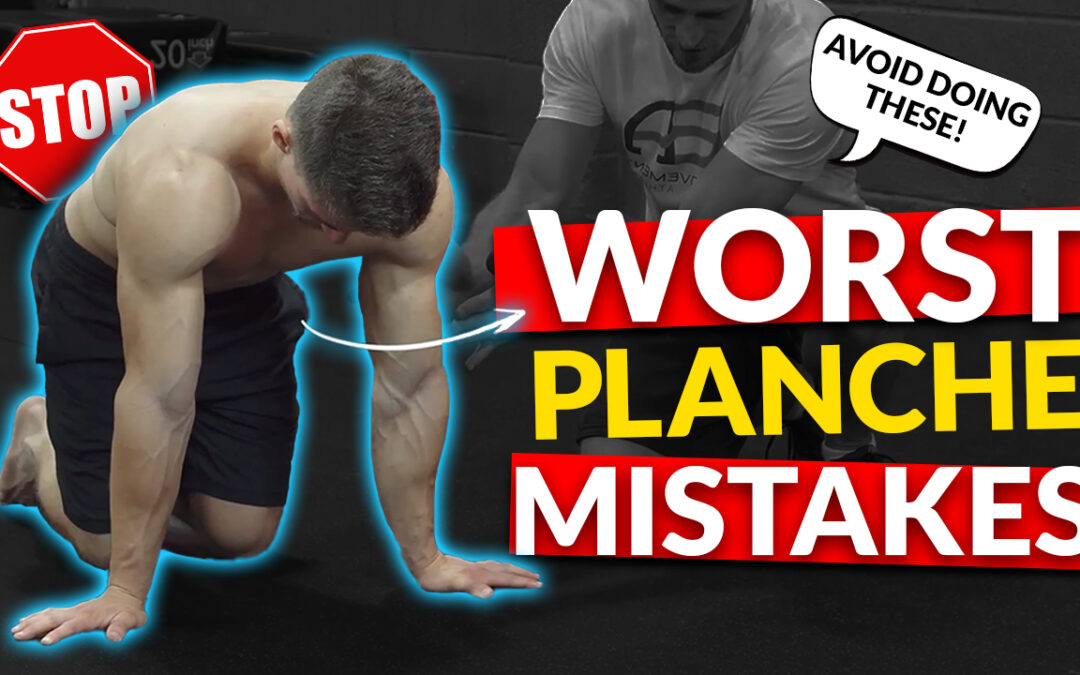


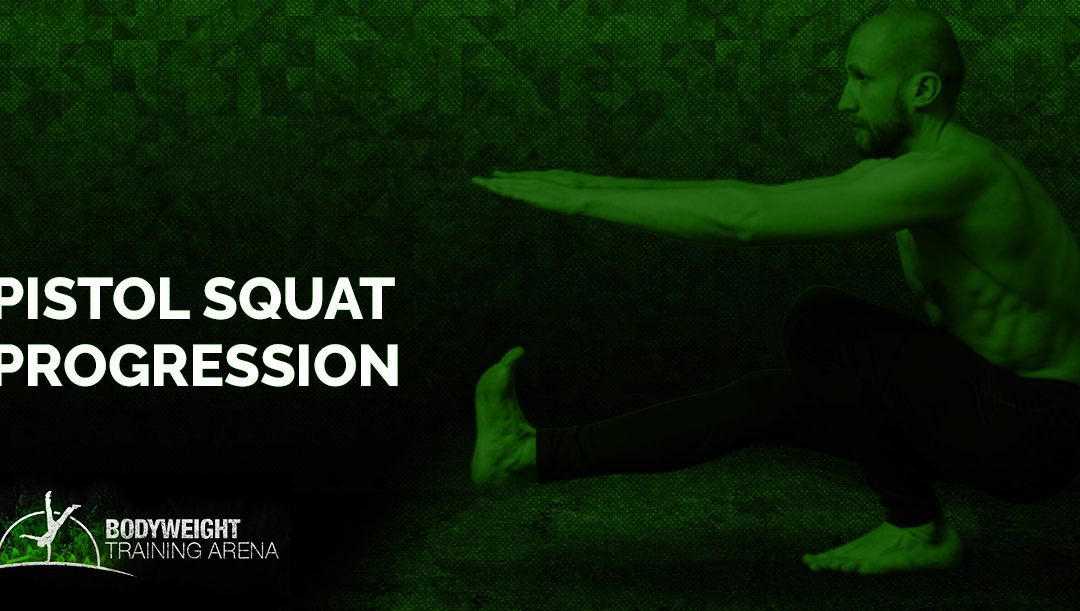

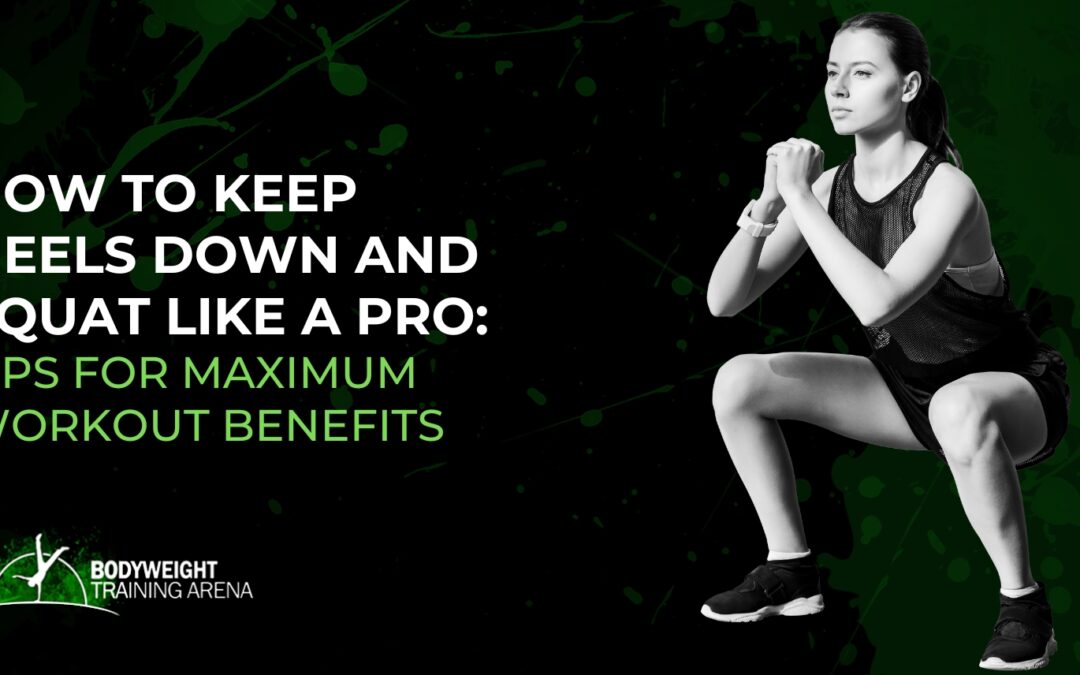

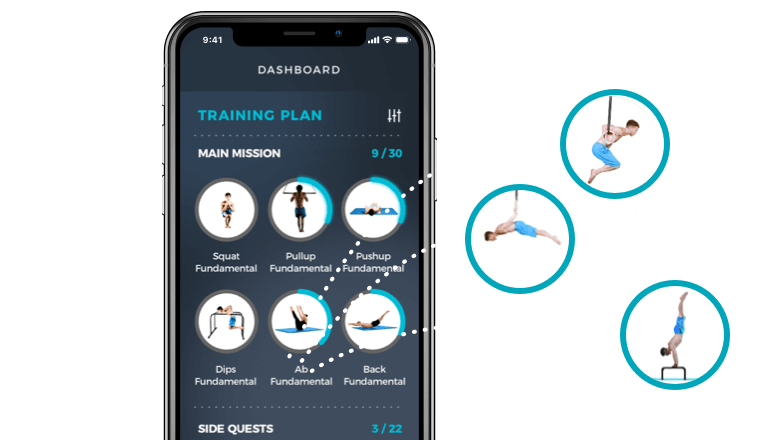
legs are actually the area that i tend to neglect the most so thanks a lot for this incredibly depth guide , will follow it to turn my legs from twigs into trunks !
did you do it?
This was two years ago. How’d it go?
Thank you very much for this great article! Videos are awesome and informative! I would like to have such legs, big and strong as tree trunks. I like this comparasion a lot because I’m forest engineer, lol! I agree that agreat majority of dumb stuff has been centered on people training or trying to strengthen their legs. So, this article is completely different for a change! What are your favourite legs calisthenics exercises?
Pistol squats look like you have so much power and energy in your body to complete that move. I cannot imagine how much strength it takes to do that one.
Sissy squats should be in there, as they isolate the quads and are good for either pre exhausting the quads or finishing off with them, they bring definition and seperation to the quads
Thanks for the heads up Sam – I will keep those in mind for future posts.
Isn’t “separation” just a matter of 1.) Lowering your body fat and 2.) Increasing the size of all of the muscles in a given area?
Thank yo so much for this information. How many of these exercises should we do? Also, how many reps and sets?
my god the completeness of this article
Killer workout. However, for gain there are three factors are important. A healthy diet, regular exercise and the proper rest. That’s why for the best result with such a great workout plan you should care about your diet. Eat healthily. Take a help of supplements such as protein, creatine, multivitamins etc. My favorite is protein, creatine, and RAD-140. It is a great component which offers a lot of benefits to the users. Mild risks and strong anabolic properties make is a unique compound. For more visit https://bosspeptides.com/